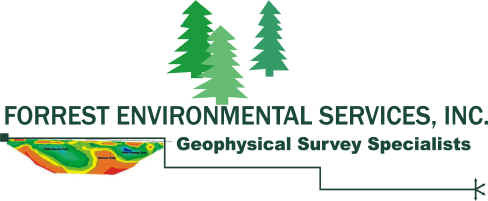
|
|
|
ELECTRICAL RESISTANCE TOMOGRAPHY
|
Magnetometer Surveys Magnetometer surveys can successfully detect anomalies in the geomagnetic field caused by buried iron objects. An induced field is produced in any magnetic material and is then superimposed on the earth's magnetic field. If the induced field is strong enough, it produces an anomaly in the earth's field. A number of magnetometers are available for different types of surveys. Both total field and gradiometer magnetometers are used. The gradiometer systems have the ability to sense vertical field gradients while remaining insensitive to horizontal gradient components. The advantage of this feature is that it allows gradiometers to sense the vertical field of subsurface objects near potential horizontal interference objects (e.g., steel fences). The magnetometer survey to identify ferrous metals (iron and steel) is commonly conducted with a magnetic gradiometer (MG). The MG is a microprocessor-based, Overhauser effect or proton precession magnetometer consisting of a sensor, staff, and control unit; it obtains total magnetic field intensity measurements. Temporal changes in the earth's normal magnetic field are corrected using a base station total field magnetometer or tie-line MG. Synchronized measurements between the base station and the gradiometer units are collected to correct for magnetic drift. The MG magnetometer contains two sensing units spaced at a 56-centimeter vertical separation in the magnetic configuration used in this survey. The lower sensor is supported by a staff at a height of approximately 2.4 meters above the ground surface. Operated in the gradiometer mode, the MG will obtain measurements of the total magnetic field intensity from the upper and lower sensors at each survey station. The difference between the lower and upper sensor will be automatically calculated to yield the vertical magnetic gradient. The total magnetic field from the lower sensor will be recorded with the vertical magnetic gradient at each station.
|